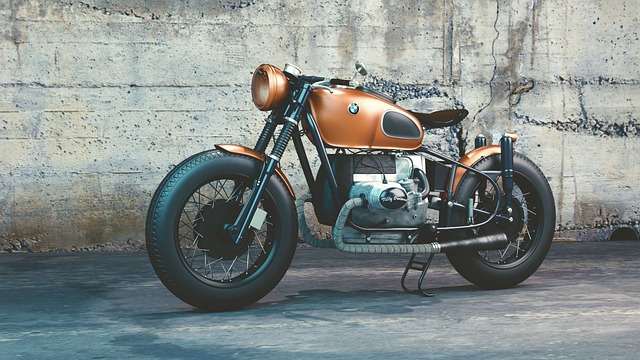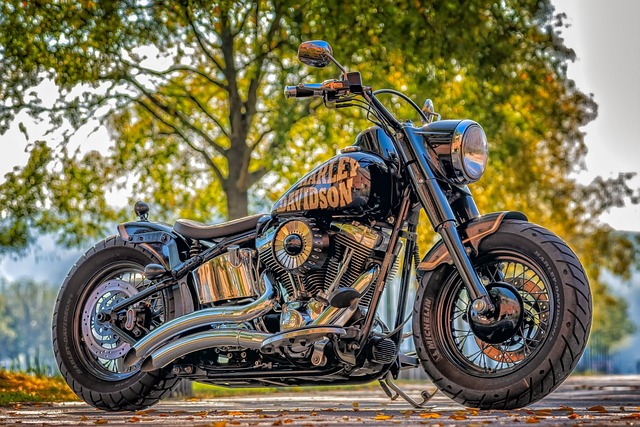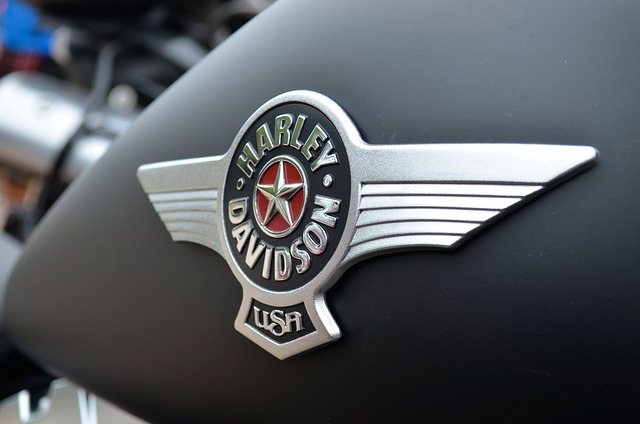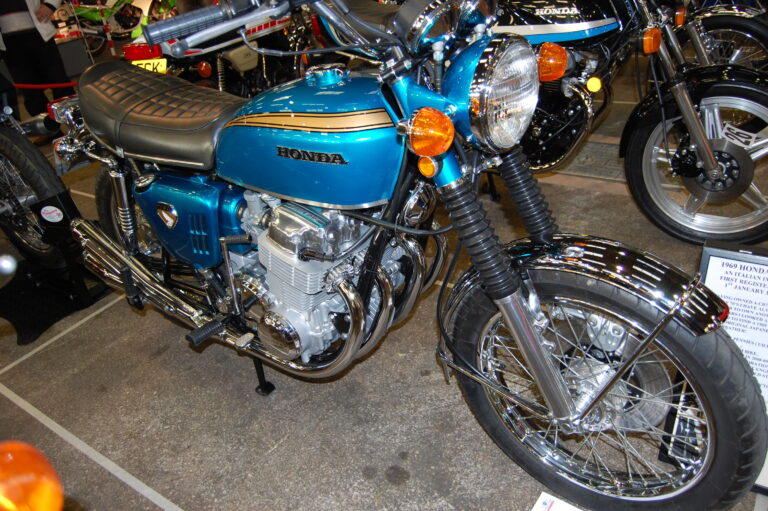How Long Can A Motorcycle Sit Without Being Used
In the expansive realm of motorcycles, where freedom meets the open road, there lies a question that lingers in the curious minds of riders and enthusiasts alike. How long can a motorcycle sit, patiently waiting, without being summoned to soar through the wind once more? Like a dormant creature with a heart of steel, motorbikes possess an intriguing ability to endure solitude. Yet, lurking within this mechanical mystery are pragmatic considerations that often evade our roving thoughts. Today, we embark on an exploration that delves into the secrets of idle motorcycles, seeking to unravel the boundaries of time and uncover the truth that lies beneath the dust-laden layers of time. Join us, as we uncover the enigmatic fate of motorcycles left undisturbed, from the days of forgotten adventures to the timely revival of their exhilarating spirits.
Table of Contents
- How Long Can a Motorcycle Sit Without Being Used: Understanding the Potential Consequences
- The Effects of Inactivity on a Motorcycle: Why Regular Usage is Essential
- Examining the Impact of Different Storage Environments on Motorcycles
- Key Maintenance Measures to Protect a Motorcycle During Long Periods of Inactivity
- Long-Term Motorcycle Storage: Essential Precautions to Avoid Costly Repairs
- Reviving a Dormant Motorcycle: Expert Tips and Tricks for Bringing It Back to Life
- FAQs
- Future Outlook

How Long Can a Motorcycle Sit Without Being Used: Understanding the Potential Consequences
When a motorcycle is left idle for an extended period, it can encounter a range of potential consequences that riders should be aware of. Understanding how long a motorcycle can sit without being used is crucial to maintain its optimum performance and longevity. Here’s what you need to know:
- Deterioration of fuel: Fuel tends to break down and become less effective over time, leading to difficulties in starting the bike when you decide to ride again. It’s essential to drain the old fuel and replace it with fresh fuel before rebooting your motorcycle.
- Battery discharge: Without a battery tender or occasional charging, the battery can drain completely, resulting in a dead battery that needs to be recharged or replaced. Keeping the battery charged or using a battery tender can prevent future starting issues.
- Tire damage: Continuous pressure on the same spot for an extended period can cause flat spots on the tires. Regularly rotating the tire position or using paddock stands can alleviate this issue and prolong tire life.
- Oil degradation: Over time, the oil in a motorcycle’s engine can degrade, losing its lubricating properties. This can result in increased friction and potential damage to critical engine components. Regular oil changes are essential to prevent long-term damage.
By understanding these potential consequences, riders can safeguard their motorcycles from common issues associated with long periods of inactivity. Regular maintenance and occasional use can help keep your motorcycle in pristine condition, ready to hit the road whenever you decide to embark on your next thrilling adventure.
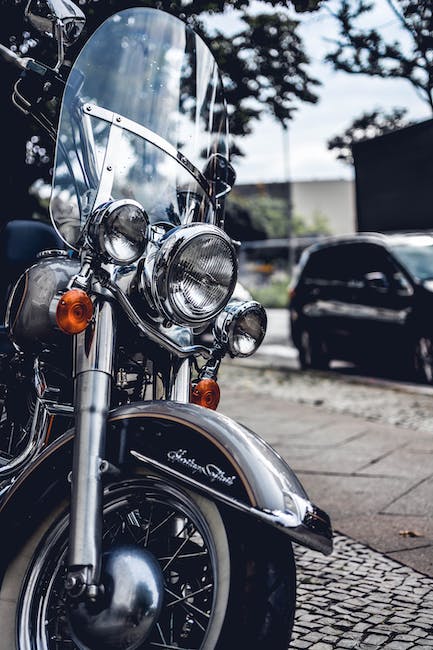
The Effects of Inactivity on a Motorcycle: Why Regular Usage is Essential
When it comes to motorcycles, regular usage is not only beneficial but also crucial for maintaining their optimal performance. Inactivity can have significant adverse effects on these powerful machines, which is why owners should exercise caution and ensure that their motorcycles are regularly utilized. Let’s explore the reasons why:
- Mechanical Deterioration: Just like any intricate machinery, motorcycles are designed to be in motion. When left dormant for extended periods, various mechanical components starts to deteriorate due to lack of lubrication and oxidation.
- Battery Troubles: Leaving a motorcycle idle for an extended period can lead to battery drainage. Constantly starting the engine helps charge the battery and prevents it from gradually losing its power.
- Tire Flatness: Over time, tires can develop flat spots when left stationary. Regular usage helps distribute the weight evenly, reducing the chances of flat spots and ensuring safer rides.
- Stagnant Fuel System: Inactivity can cause fuel residue to settle in the motorcycle’s fuel tank and carburetor, potentially clogging the system. Regular usage helps prevent the accumulation of these deposits, ensuring smooth and efficient fuel flow.
To keep your motorcycle in top shape and avoid the negative consequences of inactivity, make it a habit to take it out for occasional rides. Give your trusty machine the exercise it deserves, and it will reward you with a reliable and exhilarating journey every time you hit the open road.
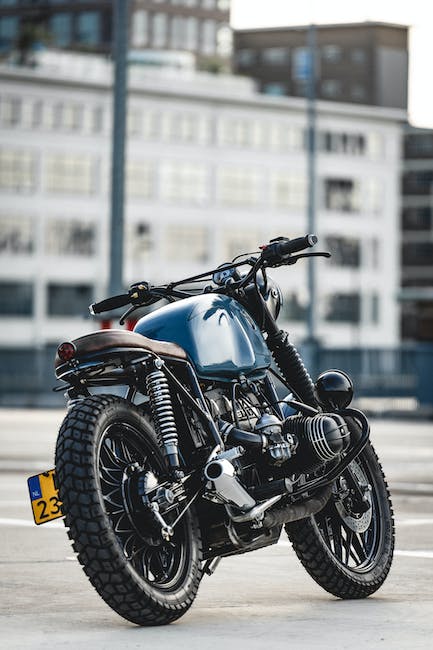
Examining the Impact of Different Storage Environments on Motorcycles
When it comes to storing your motorcycle, the environment plays a crucial role in ensuring its longevity and performance. Understanding the impact of different storage conditions is essential for every passionate rider. From low-humidity garages to outdoor parking, here’s a closer look at how each environment affects your bike:
- Indoor Storage: Storing your motorcycle in a well-insulated, low-humidity garage provides excellent protection against harsh weather conditions. The controlled environment prevents rust and corrosion, keeping your bike’s components in prime condition. Additionally, indoor storage reduces the risk of damage caused by UV rays, pests, and debris.
- Outdoor Storage: Leaving your motorcycle exposed to the elements presents challenges. Extreme temperatures can affect the battery, tire pressure, and fluid levels. Rain and snow increase the risk of rust and electrical component damage. Opting for outdoor storage demands extra precautions like using weatherproof covers and regular maintenance routine to protect your bike.
- Climate-Controlled Storage: For those seeking the ultimate protection, climate-controlled storage facilities are the way to go. These environments regulate temperature, humidity, and air quality, preserving your motorcycle’s delicate parts. Climate-controlled storage is particularly beneficial in regions with fluctuating weather conditions.
Ultimately, the storage environment you choose can greatly impact your motorcycle’s performance and longevity. By carefully considering the different aspects of each storage option, you’ll ensure that your bike remains in top-notch condition, ready to hit the road whenever you are.
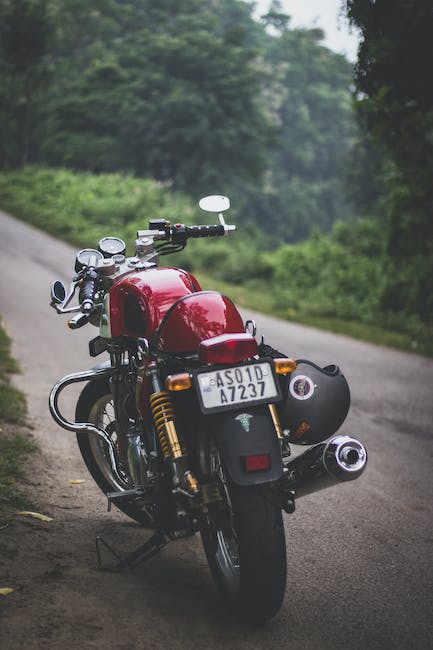
Key Maintenance Measures to Protect a Motorcycle During Long Periods of Inactivity
When it comes to ensuring the longevity and optimal performance of your beloved motorcycle during long periods of inactivity, several key maintenance measures should be followed diligently. Firstly, it is essential to store your motorcycle in a cool, dry, and well-ventilated environment to prevent the buildup of moisture and rust. Secondly, make sure to prepare the fuel system by adding a fuel stabilizer to the tank and running the engine for a few minutes to circulate it. Don’t forget to turn off the fuel valve and let the engine run until it dies, ensuring that no fuel remains in the carburetor or fuel lines. Next, it is crucial to disconnect and remove the battery, placing it on a trickle charger to maintain its charge. Lubricating all relevant pivot points, cables, and chains with a high-quality lubricant will help prevent corrosion and maintain optimal functionality. Protect your motorcycle’s tires by ensuring they are properly inflated and placing the bike on a sturdy stand or lift to relieve pressure on the wheels. Lastly, consider using a motorcycle cover specifically designed for your make and model to shield your ride from dust, UV rays, and potential accidents. By following these maintenance measures, you can rest assured that your motorcycle will be in prime condition, ready to hit the road when the time is right.
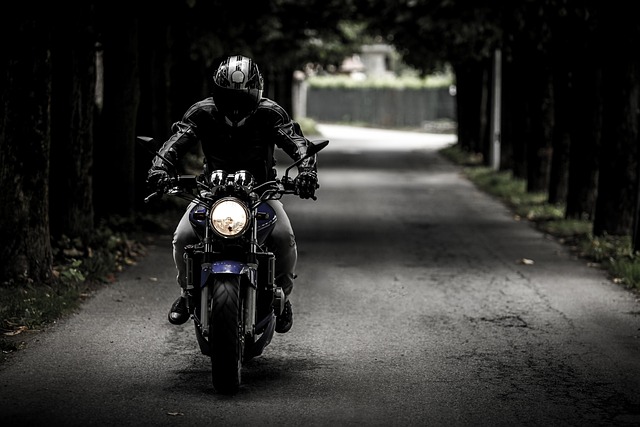
Long-Term Motorcycle Storage: Essential Precautions to Avoid Costly Repairs
When it comes to storing your motorcycle for an extended period, taking essential precautions is crucial to avoid costly repairs down the line. Here are some key steps to protect your bike:
- Prepare the Fuel System: Before storage, fill the tank with fresh fuel and add a fuel stabilizer to prevent it from deteriorating. Run the engine for a few minutes to circulate the treated fuel.
- Change the Oil and Filter: Old oil can become acidic over time, causing damage to engine components. Changing the oil and filter before storage will help protect the engine.
- Protect the Battery: Disconnect the battery or use a battery tender to avoid draining it. Clean and lubricate the terminals to prevent corrosion.
- Tire Care: Inflate the tires to the recommended pressure and consider placing the bike on a stand to avoid flat spots. If possible, rotate the tires periodically to minimize stress on specific areas.
- Cover and Shelter: Use a breathable cover to protect your motorcycle from dust, moisture, and sunlight. If storing outdoors, find a suitable shelter or invest in a dedicated motorcycle storage unit.
By following these precautions, you can ensure that your motorcycle remains in optimal condition during long-term storage, saving you from expensive repairs and ensuring a hassle-free ride when you’re ready to hit the road again.
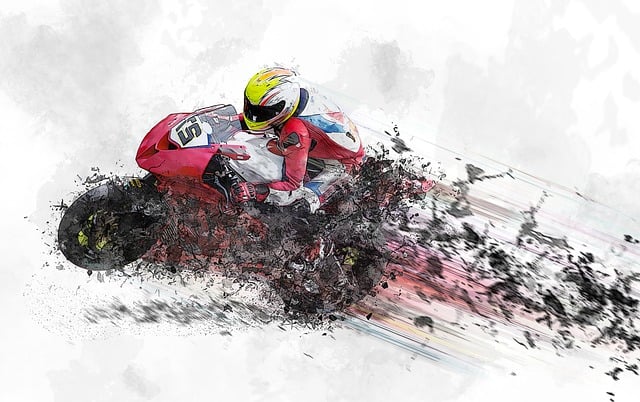
Reviving a Dormant Motorcycle: Expert Tips and Tricks for Bringing It Back to Life
So, you’ve stumbled upon a dormant motorcycle that has seen better days, but fear not! With a little bit of effort and some expert tips and tricks, you can bring it back to life and experience the thrill of riding once again. Here are some invaluable recommendations to get you started on your journey:
- Inspect and assess: Begin by thoroughly examining the motorcycle to understand the extent of damage and identify potential issues. Look out for rust, corrosion, broken parts, or any leaking fluids. This step will help you better plan the restoration process and estimate the required resources.
- Get technical: Invest in a reliable service manual for your bike’s make and model. It will serve as your comprehensive guide throughout the restoration, providing detailed instructions and specifications for each part.
- Don’t overlook the basics: Start with the basics such as changing fluids, replacing spark plugs, and checking the battery. These small tasks can often have a significant impact on the bike’s performance and overall reliability.
- Assess the fuel system: If your dormant motorcycle has been sitting for an extended period, it’s crucial to inspect the fuel system thoroughly. Clean or replace the fuel tank, filter, and carburetors to avoid clogs that can hinder performance.
- Take it one step at a time: Rome wasn’t built in a day, and the same goes for a dormant motorcycle restoration. Break down the restoration process into manageable steps and tackle them one at a time to maintain motivation and prevent feeling overwhelmed.
Reviving a dormant motorcycle into its former glory is a rewarding endeavor that will not only bring joy to your life but also provide you with valuable mechanical knowledge. Remember, patience and perseverance are key. Get ready to embark on an exciting journey that will have you cruising down the open road on your newly revitalized two-wheeled companion!
FAQs
1. How long can a motorcycle sit without being used before it starts causing problems?
Ah, the age-old question! The answer varies based on several factors, but generally, a motorcycle can sit idle for a few weeks to a couple of months without significant issues. However, it’s essential to keep an eye on some key aspects like the battery, fuel system, tires, and overall lubrication.
2. What problems can arise from leaving a motorcycle unused for an extended period?
Leaving a motorcycle untouched for an extended period may give rise to various nuisances. The battery may die, the fuel can go bad and clog the system, tires may develop flat spots, and the engine’s internal lubrication may deteriorate. All these issues could lead to headaches when you finally decide to rev up that beast.
3. Can’t I just start the motorcycle occasionally to avoid these problems?
While it may seem like a clever solution, regularly starting your motorcycle without allowing it to reach operating temperature can do more harm than good. These short bursts of activity don’t allow the engine to properly warm up and circulate oil, causing potential damage in the long run. It’s best to take a proper ride to keep things in tip-top shape.
4. How can I prepare my motorcycle for long periods of inactivity?
Preparing your motorcycle for a long slumber isn’t rocket science. Start by giving it a thorough cleaning, ensuring no moisture is left lingering. Add a fuel stabilizer to the tank and let the engine run for a few minutes to distribute the mixture. Inflate the tires to the manufacturer’s recommended pressure and give it a good coat of protective wax to fight off any potential rust.
5. Is it necessary to disconnect the battery during storage?
If you plan to let your motorcycle hibernate for an extended period, it’s highly recommended that you disconnect the battery to prevent it from draining completely. However, if you’re storing it for a shorter duration, keeping the battery connected and using a maintenance charger can help maintain its health.
6. Can I revitalize an old, unused motorcycle?
Absolutely! With a little love and attention, you can resurrect even the most neglected motorcycle. Start by checking the fluids, replacing the battery if needed, and inspecting the fuel system. Give it a thorough clean-up, check the tires’ condition, and evaluate critical components like brakes and suspension. With some mechanic magic, you can bring that forgotten steed back to life.
Remember, nothing beats regular use and proper maintenance to keep your motorcycle in excellent condition. So, fire up that engine and hit the open road. Your two-wheeled companion will thank you later!
The Conclusion
As we bring this thrilling ride to a close, we hope that our exploration into the captivating question of how long a motorcycle can sit without being used has left you with a sense of wonder and enlightenment. From the starting line of our investigation, we witnessed the steady dance of time as it swirled around dormant engines and silent steel frames.
Like a master craftsman in his workshop, we delved into the intricate workings of these mechanical marvels. From the piston’s first stroke to the pulsating heartbeat of the carburetor, we deciphered the secrets that lay hidden beneath the glistening chrome and sleek paint. In this symphony of steel, we discovered that motorcycles, just like any other machine, yearn to be embraced by the open road and the winds of freedom.
Yet, as we shed light on their vulnerability, we also unveiled the mechanisms that protect them. The diligent hands of maintenance and care can extend a motorcycle’s hibernation, shielding it from the ravages of time. We marveled at the power of proper storage, regular servicing, and tender loving care to revive even the most slumbering of steeds.
But amidst our revelations, we were reminded of the inherent restlessness that courses through a motorcycle’s veins. A creature born to roam vast landscapes, asphalt coursing through its very essence, it is in its nature to yearn for adventure and exploration. The dormant motorcycle dreams of a world beyond stagnant garages; it longs for the exhilarating tale of the open road, where it can proudly display its prowess.
Yet, even as time passes, and seasons change, the motorcycle patiently waits, for it knows that the moment of its revival shall come. So, dear reader, as we conclude this captivating journey into the enigmatic world of idle motorcycles, remember to pay homage to your prized steed and grant it the freedom it so eagerly seeks.
Until we meet again, may your motorcycles never rest for too long. For they are not mere machines; they are sentient creatures embodying the spirit of adventure and a desire to break free. With diligence and attention, they shall remain loyal companions, ready to carry us to distant horizons when the call of the open road beckons.

